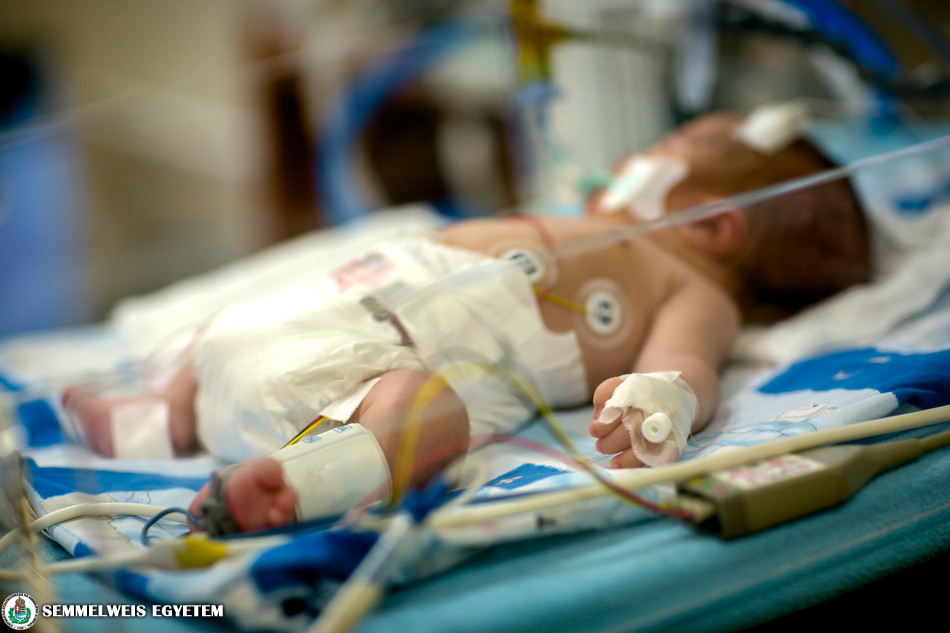The risk of premature births could be reduced by an average of 29% with simple swabs taken from the vagina during pregnancy, according to a recent scientific paper published in the journal Scientific Reports by researchers at Semmelweis University, Budapest, Hungary.
In the most complex international meta-analysis to date, Hungarian gynaecologists reviewed 10,634 studies to compare data from 13 publications with 143,534 births from all over the world, including the United States, Europe and India. The experts hypothesised that routine screening for abnormal vaginal flora could reduce the risk of preterm birth.
The WHO defines preterm birth as a delivery before the 37th week of pregnancy. In 2020, 4-16% of babies were born prematurely. Preterm birth is the leading cause of death for children under five, with 900,000 newborns dying in 2019. (In Hungary, 8-9% of births are preterm, less than the international average. According to the researchers, this is due to the country’s traditionally more rigorous prenatal care.)
“Babies weighing less than 1000 grams at birth have the lowest chance of survival. They are usually born at 28-30 weeks.
One of our most important findings is that a simple vaginal swab with a brush stick can reduce the risk of preterm birth by up to 67%,”
says Dr. Eszter Hoffmann, a resident doctor at the Department of Obstetrics and Gynaecology at Semmelweis University, and the first author of the study.
 Preterm delivery can be either provider-initiated for medical reasons or spontaneous. The latter is associated with various risk factors, such as genetics, cervix incompetence or infections.
Preterm delivery can be either provider-initiated for medical reasons or spontaneous. The latter is associated with various risk factors, such as genetics, cervix incompetence or infections.
Abnormal vaginal flora occurs when the balance between the good and bad bacteria in the vagina tips over, and the pH-level, which is usually an acidic environment, changes to alkaline. Several factors can trigger this change, e.g., stress, food, sex, swimming in public pools, antibiotics, or even pregnancy itself. In an alkaline environment, harmful bacteria can colonise and multiply more quickly. Non-treated bacterial vaginosis can lead to ascending infections, shortening of the cervix, and eventually premature birth.
Symptoms of such infections include foul discharge, burning sensation and vaginal pain, but patients are most often asymptomatic. Screening can be crucial, as up to 40% of spontaneous preterm deliveries occur because of intrauterine infections – and bacterial vaginosis can be treated in several ways, such as with antibiotics or probiotics.
In their largest-ever meta-analysis, Semmelweis researchers compared data from asymptomatic pregnant women.
They found that regular screening reduced the risk of preterm birth before the 37th week by 29% compared to those not screened during pregnancy. They observed a 36% reduction in the risk of having a too low birth weight (under 2500 grams), and a 49% decrease in the risk of preterm birth before the 32nd week. The most significant risk fall (67%) was observed for extremely low birth weights (less than 1000 grams).
The researchers concluded that the earlier a premature birth occurs, the more likely an infection will trigger it.
“The statistics are just numbers, but a family mourns every loss. Long-term complications are also common in premature babies. In the most severe cases, they include retinal detachment, breathing difficulties due to immaturity of the lungs, strokes and sepsis. Fortunately, premature care can nowadays work wonders, but avoiding complications is still crucial,” explains Dr. Eszter Hoffmann.
 Managing preterm birth significantly burdens healthcare systems worldwide. A previous study has shown that for every €46 spent on screening a patient and treating the infection, €56,228 can be saved by preventing preterm birth (H. Kiss et al., 2005).
Managing preterm birth significantly burdens healthcare systems worldwide. A previous study has shown that for every €46 spent on screening a patient and treating the infection, €56,228 can be saved by preventing preterm birth (H. Kiss et al., 2005).
“Vaginal screening is not part of antenatal routine care, and its role in preventing preterm birth has been long debated. Several European studies have previously concluded that screening for abnormal vaginal flora can reduce the risk of preterm birth. However, U.S.-based professional bodies have not yet seen satisfactory evidence to recommend the screening in guidelines.
Our findings are significant and suggest that routine screening (e.g., Gram stain method, pH screening or combined), which is simple and inexpensive, can reduce the risk of preterm birth,”
explains Dr. Nándor Ács, Director of the Department of Obstetrics and Gynaecology at Semmelweis University.
In their subsequent study, the Hungarian researchers will examine the effectiveness of the different treatment options and the genetic background of premature birth.
Fotó: Kovács Attila, Barta Bálint – Semmelweis Egyetem



